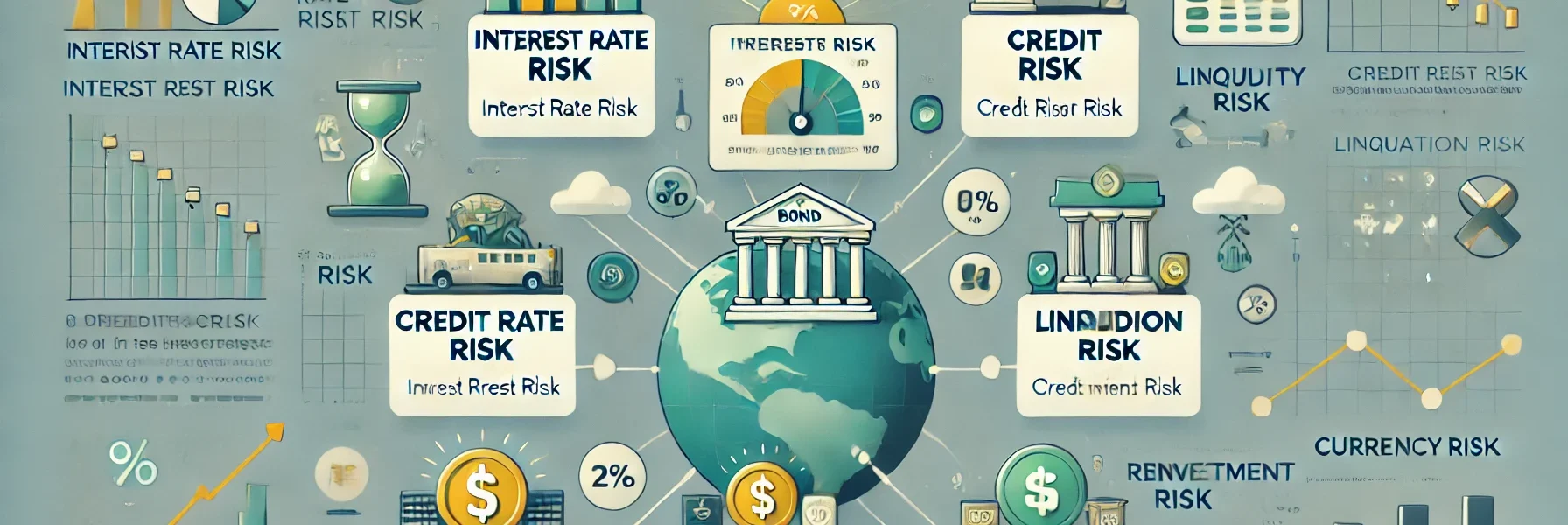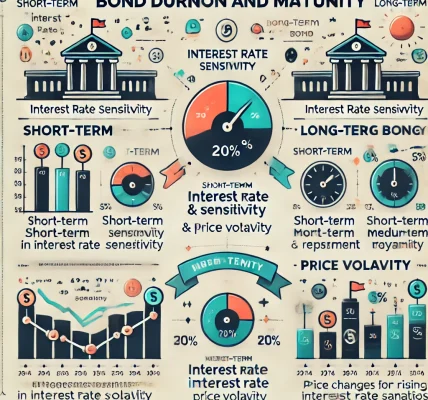Investing in bonds is often perceived as a safer and more predictable alternative to equities. While bonds typically offer lower volatility and stable returns, they are not without risks. Understanding these hidden risks is crucial for any investor aiming to build a balanced and resilient portfolio. Here are some of the key risks associated with bond investments and practical strategies to mitigate them.
1. Interest Rate Risk
Risk Explanation: Interest rate risk refers to the inverse relationship between bond prices and interest rates. When interest rates rise, bond prices typically fall, and vice versa. This can lead to capital losses for bondholders who need to sell their bonds before maturity.
Mitigation Strategies:
- Diversify Bond Duration: Hold a mix of short-, medium-, and long-term bonds to reduce exposure to any single interest rate environment.
- Laddering Strategy: Create a bond ladder by purchasing bonds with staggered maturities to spread out reinvestment risk.
- Floating-Rate Bonds: Consider investing in floating-rate bonds, which adjust their interest payments periodically to reflect market conditions.
2. Credit Risk
Risk Explanation: Credit risk, or default risk, is the danger that a bond issuer may fail to make interest payments or repay the principal. This risk is higher with lower-rated or non-investment-grade bonds.
Mitigation Strategies:
- Credit Quality Analysis: Focus on bonds with high credit ratings (e.g., AAA, AA) issued by reputable entities.
- Diversification: Spread investments across different sectors and issuers to minimize the impact of a default.
- Bond Insurance: Consider bonds with insurance or guarantees that protect against issuer default.
3. Inflation Risk
Risk Explanation: Inflation erodes the purchasing power of future bond payments. Fixed-income bonds are particularly vulnerable because their interest payments remain constant over time.
Mitigation Strategies:
- Inflation-Protected Securities: Invest in Treasury Inflation-Protected Securities (TIPS) or other inflation-linked bonds.
- Shorter Duration Bonds: Shorter-term bonds are less exposed to the long-term effects of inflation.
4. Liquidity Risk
Risk Explanation: Liquidity risk arises when it becomes difficult to sell a bond without significantly affecting its price. This is more common with bonds issued by smaller companies or municipalities.
Mitigation Strategies:
- Invest in Liquid Markets: Focus on government and large corporate bonds, which generally have more active trading.
- Bond Funds: Consider bond mutual funds or exchange-traded funds (ETFs) that provide greater liquidity through pooled investments.
5. Reinvestment Risk
Risk Explanation: When bonds mature or pay interest, investors face the risk that reinvested proceeds will earn a lower yield if interest rates decline.
Mitigation Strategies:
- Laddered Portfolio: Maintain a laddered bond portfolio to stagger maturity dates and smooth out reinvestment timing.
- Callable Bond Caution: Avoid or limit exposure to callable bonds, which may be redeemed early when interest rates fall.
6. Currency Risk (for International Bonds)
Risk Explanation: Investing in foreign bonds exposes investors to fluctuations in exchange rates, which can impact returns.
Mitigation Strategies:
- Hedged Investments: Choose currency-hedged bond funds to reduce exposure to exchange rate volatility.
- Diversified Currency Exposure: Spread investments across bonds issued in multiple currencies.
Conclusion
While bonds are a valuable component of a diversified investment portfolio, they come with their own set of risks that should not be overlooked. By understanding and proactively managing interest rate, credit, inflation, liquidity, reinvestment, and currency risks, investors can enhance the stability and performance of their fixed-income investments. Implementing these strategies will help mitigate potential pitfalls and maintain a balanced, resilient portfolio in varying economic conditions.



